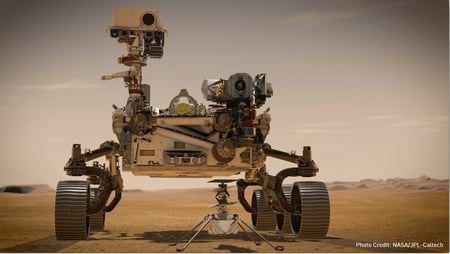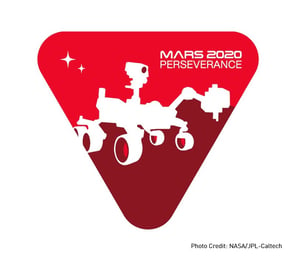As the Perseverance rover begins its journey into deep space, it’s a great time to reflect on why we explore and go to Mars. Scientists have been exploring our solar system with robotic spacecraft for nearly six decades in search of answers to three questions: Where did we come from? Where are we going? Are we alone?
These exploration missions help scientists understand the evolution of the universe, how it was formed and is evolving, literally re-writing science books. Mars is a planet we have studied since the beginning of these robotic space missions. Not too unlike our planet, Mars is believed to have once had a strong magnetic core, thick atmosphere and running water, much like we do on Earth today. In fact, Mars may have supported life. However, over the years, the atmosphere on Mars has been stripped away by the solar wind and the water is frozen on the surface. Understanding how this evolution on Mars took place some billions of years ago will lend great insights into the evolution we may experience on our planet as we see our climate change accelerating.
 Exciting capabilities of Mars 2020 mission
Exciting capabilities of Mars 2020 missionThe Mars 2020 mission includes the Perseverance robotic rover loaded with seven science instruments, 19 cameras and the Ingenuity, an experimental helicopter. Mars 2020 will begin the process of collecting physical data we can evaluate on Earth. In fact, Perseverance is the first spacecraft equipped with a sample caching system to allow for the collection of samples to be returned to Earth under the Mars Sample Return program, currently in the mission formation period. The Perseverance rover will also search for signs of ancient life — if found, this would be the most fascinating discovery! Ingenuity, the first non-Earth helicopter, is hitching a ride on Perseverance and brings some first-ever capabilities to Mars exploration. This pioneering space helicopter will test the ability and usefulness of Mars aerial exploration to study the Red Planet from a different perspective than the time-tested rovers. Why? Once humans get to Mars, helicopters can help with further exploration and terrain management.
Robotic missions lead the way for human exploration
Speaking of humans, robots are leading the way for women and men to safely explore Mars. The work being done by robotic spacecraft and rovers will help us better understand the environment and the safety precautions necessary to sustain life on the Red Planet. While we have been exploring Mars since the 1960s, less than 3% of Mars has been captured through high resolution imagery and our robotic explorers have traversed only a small fraction of the surface. The combination of humans and robotic exploration — with humans in the loop controlling the robots — will accelerate exploration, cause our scientific investigations to move faster, and will allow us to uncover many of the secrets this mysterious planet holds. Learning to protect Earth’s natural resources must be a primary objective of deep space exploration. Uncovering the hidden truths of the Red Planet will help us create a better future here at home.
NASA’s Mars 2020 mission successfully launched on July 30, 2020 from Cape Canaveral, Florida. The Perseverance rover will land on Mars in February 2021.


